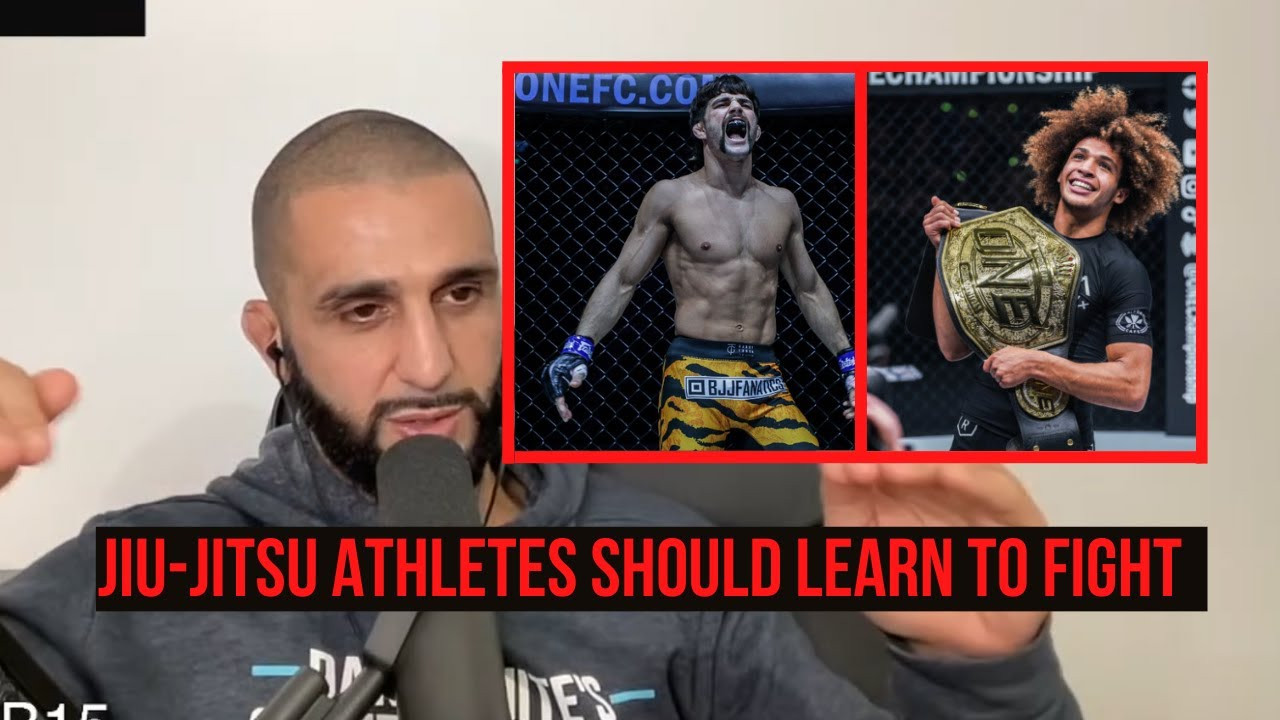Incorporating Striking into your Jiu Jitsu Training

Learning a martial art is a lot like learning how to play an instrument. It takes time and dedication to develop a talent, and people can spend their entire lives refining techniques that they typically learn within the first few months of their training. Constantly performing the same or very similar movements helps to establish muscle memory, but it also allows one to discover subtle variations in these techniques that are then used in a variety of different scenarios.
Theory and Execution for Musicians
To extend the analogy of the musician, mastery of an instrument requires two distinct processes that happen simultaneously: learning theory and learning how to turn that theory into practice. On the one hand, you’re learning how to physically handle and use an instrument. On the other hand, you’re also learning the basic theory of how notes and chords go together.
Musicians also develop a style, which is their unique approach to the instrument. It could be based in classical, jazz, bossa nova, rock, or any other type of music one can think of. What makes these styles all sound different is how they favor specific tones, chords, rhythms, and sequences over others, and most musicians blend different styles to create something unique. The same is true for composers and songwriters. Their influences don’t just come from one source but from across the musical spectrum. This is what keeps their songs from becoming stale.
Theory and Execution for Fighters
Those who learn martial arts follow a similar process. They also build up muscle memory while training and simultaneously come to understand theories about how to defend themselves. Leverage and efficiency are core jiu-jitsu principles, but they are also integral to other martial arts, too, even if they are not always explicitly talked about.
Just like musicians, martial artists also have different styles of fighting that they can learn. Jiu-jitsu is one. Karate is another.
As important as regular drilling is for anyone who is training jiu-jitsu, Coach Firas Zahabi of Tristar Gym in Montreal notes that changing it up and learning different styles can help in your development as a fighter. For those who are training jiu-jitsu, this means learning how to strike and hitting the bag at least once per week or once every other week. As he notes in the below video, “It’s going to make you better athletes.”
Striking and Self-Defense
Additionally, if your goal is self-defense rather than competing in and winning jiu-jitsu tournaments, learning another martial art that is primarily concerned with striking should be a priority. Even in jiu-jitsu gyms where striking is allowed, it is secondary to grappling.

Should you find yourself in a situation where striking becomes necessary if you are to effectively defend yourself, you are going to be unprepared if your only training is in grappling. Without practice, your strikes will lack speed and accuracy. Moreover, you will not understand the rhythm of a fight that is dominated by strikes, which means you may not have time to push the fight to the ground where you will have the upper hand due to your jiu-jitsu training. Perhaps most importantly of all, not being familiar with martial arts that favor striking from the standing position means you will not know how to defend against these kinds of strikes. In other words, if someone takes a swing at you, you may not know how to block it or dodge it. If that person connects with your nose, the fight may be over before you have the chance to use any of your jiu-jitsu training.
Breaking Habits
On top of making you a better athlete and a more complete fighter, Firas says that mixing it up a little more can give you a new perspective on your jiu-jitsu game. “There’s a certain amount of MMA that will help your jiu-jitsu,” he says.
Constantly drilling individual jiu-jitsu moves is a necessary part of training, but you can become set in your ways and this can frustrate your development as a fighter. Learning different styles allows you to become a more well-rounded fighter and to look at your jiu-jitsu training from a different perspective, which can push you to reconsider your approach to certain techniques. Similar to the musician who listens to different music styles to gain new perspective, taking classes that incorporate MMA techniques will not only make you a more effective striker; it will also force you to think about jiu-jitsu in a new way. Ultimately, this can help you refine your technique and become a better overall fighter.

